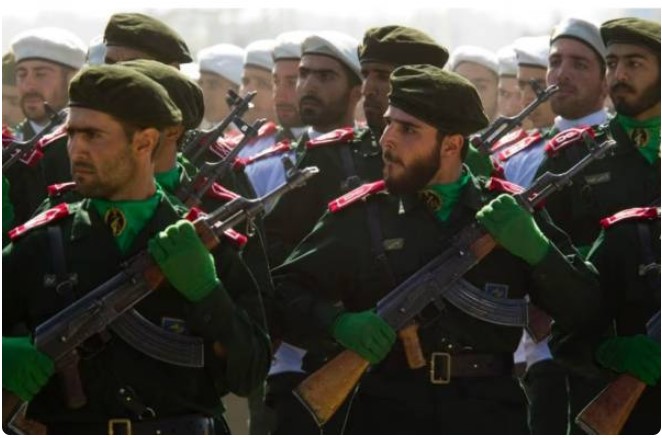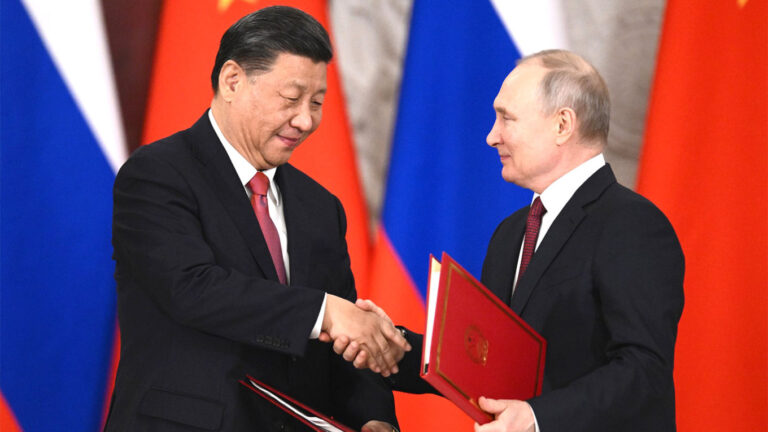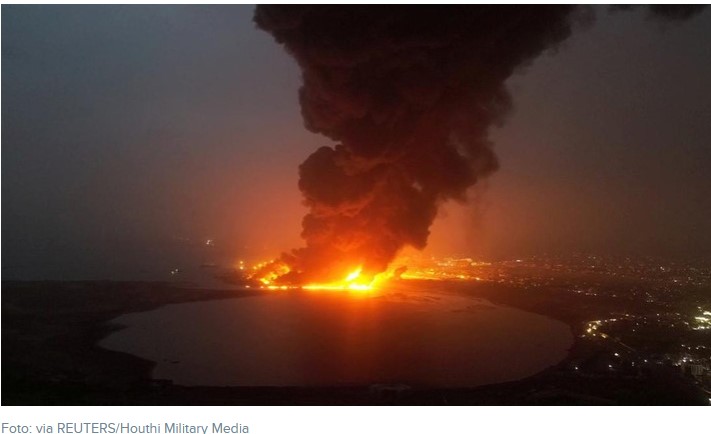
IRGC-Foto dari Reuters
STRATEGIC ASSESSMENT. As Israel prepares for a possible full-scale ground incursion into Gaza, there is much speculation over how Iran could respond. Such a response could potentially see it deploy any number of its proxy forces to escalate the conflict further. Lebanese Hezbollah has been engaged in tit-for-tat actions with the Israel Defense Forces (IDF) along Israel’s northern border, while numerous other Iranian proxies are threatening to get involved in the conflict, including some of the most hardcore Iranian-backed and controlled Iraqi Shia militias. Since Hamas’s October 7th attack, Lebanese Hezbollah has had eleven of its fighters killed in clashes with Israel. Speaking aboard Air Force One yesterday, U.S. President Joe Biden reiterated that the United States military would not commit troops to fighting Hezbollah if its forces joined the conflict against Israel. One image posted online and later pinned to the Telegram of the Iranian-backed Kata’ib Sayyid al-Shuhada (KSS) shows the group’s leader peering over the border into Israel. In a call with the head of the Hamas political bureau, Harakat Hezbollah al-Nujaba (HHN) leader Akram al-Ka’abi announced his group’s “full readiness” and willingness to help supply fighters, equipment, and weapons. This was only a day after a statement was released that could be read two ways: that Iraqi Shia militia forces may have to sit out the conflict to deal with Islamic State, or that they were preparing for combat.
Kata’ib Hezbollah (KH), KSS, and HHN stand out among the nearly 50 Iraqi Shia militias operating under the Iranian umbrella as the groups most likely to enter the conflict. Both were instrumental in the war in Syria, with seasoned leadership loyal to Tehran. Elements of these organizations took the lead in attacking U.S. troops in Iraq. Iran and its proxies have already demonstrated a keen focus on using the Internet to recruit in new members. Since 2012, Iranian proxies have used Facebook, Twitter, Telegram, and other forms of social media to spread the word and direct potential recruits to established phone banks or even to individual cellphones of designated members in various militias. Recently, Kata’ib Hezbollah has been encouraging cash transfers or credit card-based donations using the mobile payment service Zain Cash to “support brothers in the resistance in Palestine.” Elsewhere – as in Iraq in 2014 and in Syria from 2013-2016 – such activity preceded action from these factions and the wider Iranian-backed Shia militia networks. Iranian messaging presents its proxies as focused outward, in an offensive matter, as an aggressive defense of Iran’s territory, interests, and particularly, its ideological cause by tying up Tehran’s adversaries in battlefields throughout the region. In Syria, the Iranians and their proxies denied involvement in the development and deployment of forces in that country while simultaneously holding public funerals for lost members and praising their commitment to the struggle.
Lebanese Hezbollah has not yet attempted a full-on cross-border infiltration of Israel as it did to spark the 2006 Hezbollah-Israel War. Still, cross-border attacks using anti-tank guided missiles and targeting security cameras with small arms have become a regular feature of this conflict over the past week and could quickly escalate the situation. Likely viewing the Palestinians as a useful means to maintain plausible deniability, Hezbollah has allowed its Palestinian allies to traverse through Hezbollah-controlled south Lebanon. Hamas and Palestine Islamic Jihad (PIJ) members hailing from Ain al-Hilweh, a Palestinian camp near Saida, have been killed in at least one raid. If Hezbollah and Iranian-backed Iraqi Shia militia become further involved in the conflict, there may be more cross-border raids relying on small cells of well-trained fighters with a full arsenal of rockets at their disposal. Accordingly, the Golan Heights is a particularly attractive staging ground for militant advances. In 2017, Harakat Hizballah al-Nujaba announced it had created a Golan Liberation Brigade. While it was likely a public relations stunt, it served as further notification of the group’s and Iran’s interests in eventually having more Iraqi Shia militia presence in the Golan. The area has been an area of intense focus for Lebanese Hezbollah and other Iranian-controlled Shia militia since late 2013.
However, Iranian-backed Shia militias vary in their capabilities. While Iran’s primary Iraqi proxy groups are part of the Iraqi state-funded al-Hashd al-Sha’abi, other Syrian Shia militias controlled by Iran’s Islamic Revolutionary Guard Corps-Quds Force (IRGC-QF) – such as the Afghan Shia-staffed Lashkar Fatemiyoun and Pakistani Lashkar Zaynabioun – also help make up the larger constellation of Iranian proxy assets. Some groups, particularly more loyal and seasoned IRGC-QF proxies like Lebanese Hezbollah and several Iraqi Shia militias, have access to and experience with more advanced weaponry, such as improvised rocket-assisted munitions, rocket systems, and drones. Other proxy forces have primarily filled a supportive function, operating as reserves or purely infantry units. Movements by more localized Syrian units do not always necessitate full-scale mobilization, as other groups in the area are still managing affairs on the ground in Syria. Earlier recruitment efforts in Syria saw fresh recruits deployed with minimal training. If recruitment ramps up in the coming days and weeks, it could signal that Iran needs greater reserves and additional support in the Syrian theater. This likely means Tehran would call upon its core Shia units to do most of the heavy lifting in a war targeting Israel.
Iran would be heavily reliant on forces already on the ground in Syria for attacks against Israel. Lebanese Hezbollah has assumed a key leadership and combat role in Syria and has gained valuable experience fighting against an array of adversaries. Those forces currently number in the tens of thousands, though a multitude of other IRGC-QF-controlled groups also maintain tens of thousands of fighters throughout Syria. These forces are dispersed from Al-Bukamal in the east, on Iraq’s border, to the Syrian Golan. Yet, dispatching more Shia militiamen to the region would not be easy for Iran. With Israeli airstrikes hitting Syrian and potentially Lebanese airports and maintaining air superiority, landing a loaded airlift vehicle in Aleppo or Damascus, a preferred method for transporting arms and Shia militiamen to Syria, is no longer a viable option. Internally moving large numbers of these forces to a Golan front would also be difficult, as buses and other vehicles could be easily interdicted. Thus, a key element of the Iranian strategy would likely be to stall Israel’s ground invasion of Gaza while assembling these forces for specific deployments. Combined with smaller-scale escalations, this would allow Iran and its proxies to maintain their militant stance while not incurring the potential military costs of a full-scale deployment of these forces.
Escalating the conflict would also likely involve calculations regarding further threatening and attacking U.S. interests in Iraq and Syria as a form of leverage vis-a-vis the U.S.-Israeli alliance. In the past, the U.S. base in the southern Syrian area of al-Tanf and U.S. forces in eastern Syria have been targeted by core Shia militia groups. In Iraq, various front groups have targeted U.S. interests and forces since the U.S. killing of IRGC-QF commander Qasem Soleimani in January 2020. On October 17, a new front group – likely assembled by KH – denounced the United States one day before “The Islamic Resistance in Iraq” claimed responsibility for a drone attack targeting U.S. forces at the al-Asad airbase in Iraq. “Islamic Resistance” is a common euphemism for the proxy forces arrayed by Iran. U.S. Central Command (CENTCOM) released a statement yesterday that read: “In the last 24 hours, the U.S. military defended against three drones near U.S. and Coalition forces in Iraq. In western Iraq, U.S. forces engaged two drones, destroying one and damaging the second, resulting in minor injuries to Coalition forces. Separately in northern Iraq, U.S. forces engaged and destroyed a drone, resulting in no injuries or damage. We are continuing to assess the impacts to operations.”
Escalation can also involve rallying protests against U.S. diplomatic facilities. In December 2019, Iranian-backed Iraqi Shia militia protests targeted the U.S. embassy in Baghdad, causing damage to the facility. Earlier this week, elements from and loyal to Iranian-backed Iraqi Shia militias demonstrated in Baghdad, while Protestors brandishing the flags of Lebanese Hezbollah and various Palestinian proxies of Iran joined protests near the U.S. embassy in Lebanon. Iran’s proxy mobilization and penchant for escalation is a risky form of brinksmanship that could push the region into a larger, full-scale war. The activities of Iranian proxies will be a bellwether for Tehran’s intentions and likely motivated Washington to deploy two carrier strike groups and a rapid reaction force to the eastern Mediterranean.





